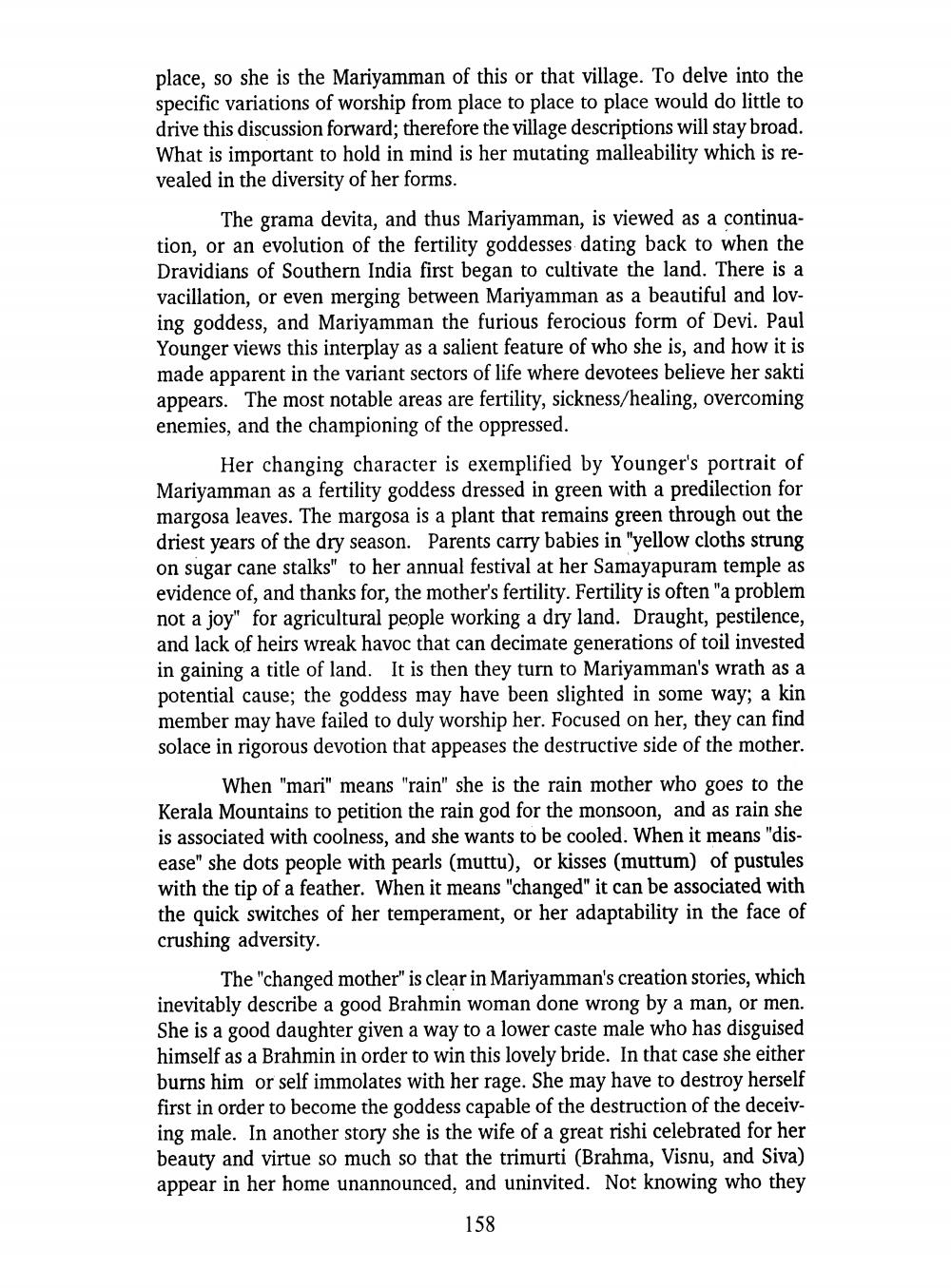________________
place, so she is the Mariyamman of this or that village. To delve into the specific variations of worship from place to place to place would do little to drive this discussion forward; therefore the village descriptions will stay broad. What is important to hold in mind is her mutating malleability which is revealed in the diversity of her forms.
The grama devita, and thus Mariyamman, is viewed as a continuation, or an evolution of the fertility goddesses dating back to when the Dravidians of Southern India first began to cultivate the land. There is a vacillation, or even merging between Mariyamman as a beautiful and loving goddess, and Mariyamman the furious ferocious form of Devi. Paul Younger views this interplay as a salient feature of who she is, and how it is made apparent in the variant sectors of life where devotees believe her sakti appears. The most notable areas are fertility, sickness/healing, overcoming enemies, and the championing of the oppressed.
Her changing character is exemplified by Younger's portrait of Mariyamman as a fertility goddess dressed in green with a predilection for margosa leaves. The margosa is a plant that remains green through out the driest years of the dry season. Parents carry babies in "yellow cloths strung on sugar cane stalks" to her annual festival at her Samayapuram temple as evidence of, and thanks for, the mother's fertility. Fertility is often "a problem not a joy" for agricultural people working a dry land. Draught, pestilence, and lack of heirs wreak havoc that can decimate generations of toil invested in gaining a title of land. It is then they turn to Mariyamman's wrath as a potential cause; the goddess may have been slighted in some way; a kin member may have failed to duly worship her. Focused on her, they can find solace in rigorous devotion that appeases the destructive side of the mother.
When "mari" means "rain" she is the rain mother who goes to the Kerala Mountains to petition the rain god for the monsoon, and as rain she is associated with coolness, and she wants to be cooled. When it means "disease" she dots people with pearls (muttu), or kisses (muttum) of pustules with the tip of a feather. When it means "changed" it can be associated with the quick switches of her temperament, or her adaptability in the face of crushing adversity
The "changed mother" is clear in Mariyamman's creation stories, which inevitably describe a good Brahmin woman done wrong by a man, or men. She is a good daughter given a way to a lower caste male who has disguised himself as a Brahmin in order to win this lovely bride. In that case she either burns him or self immolates with her rage. She may have to destroy herself first in order to become the goddess capable of the destruction of the deceiving male. In another story she is the wife of a great rishi celebrated for her beauty and virtue so much so that the trimurti (Brahma, Visnu, and Siva) appear in her home unannounced, and uninvited. Not knowing who they
158




